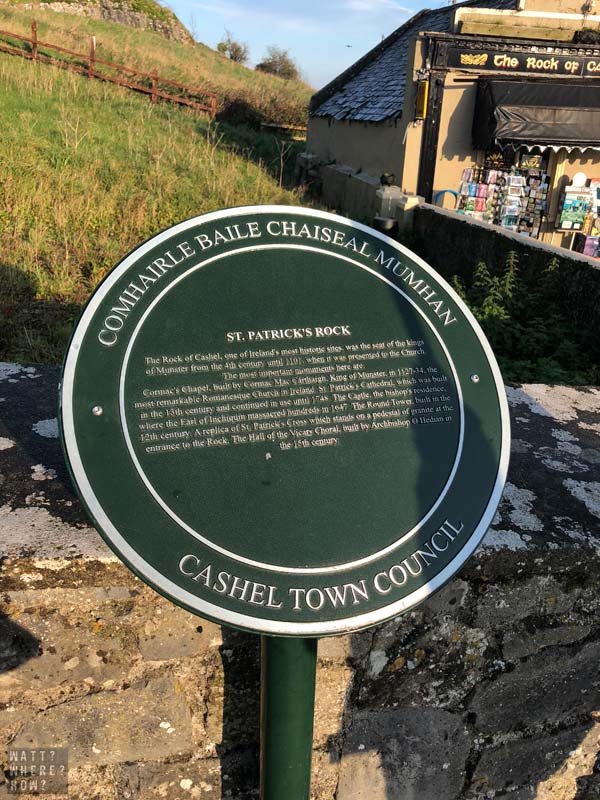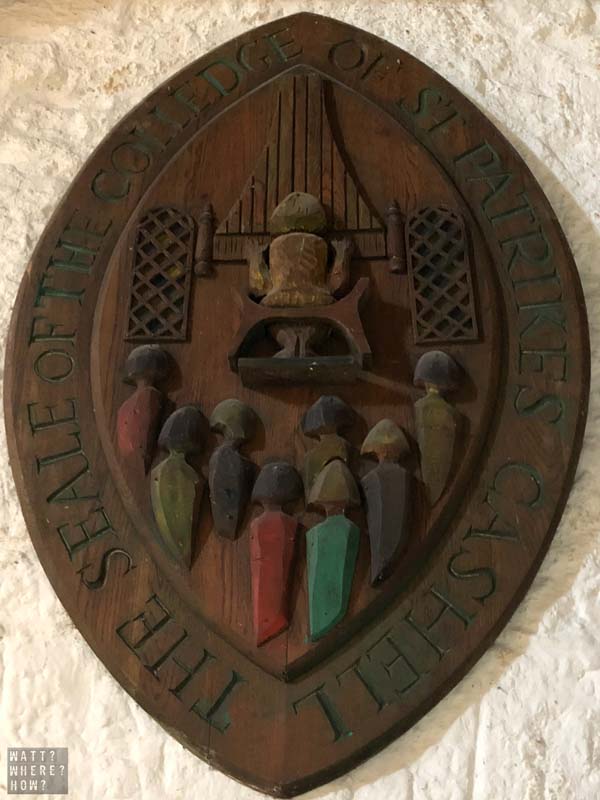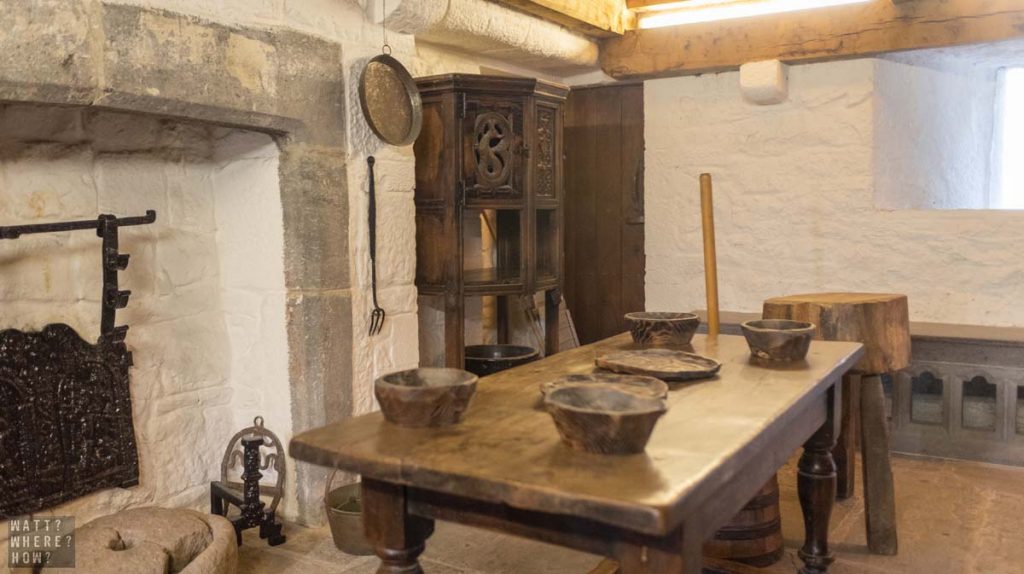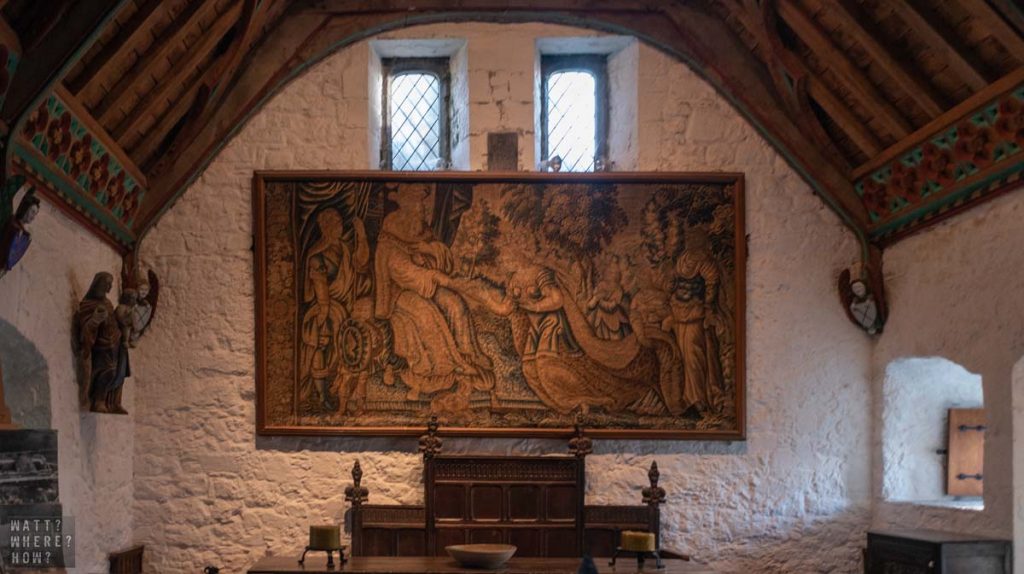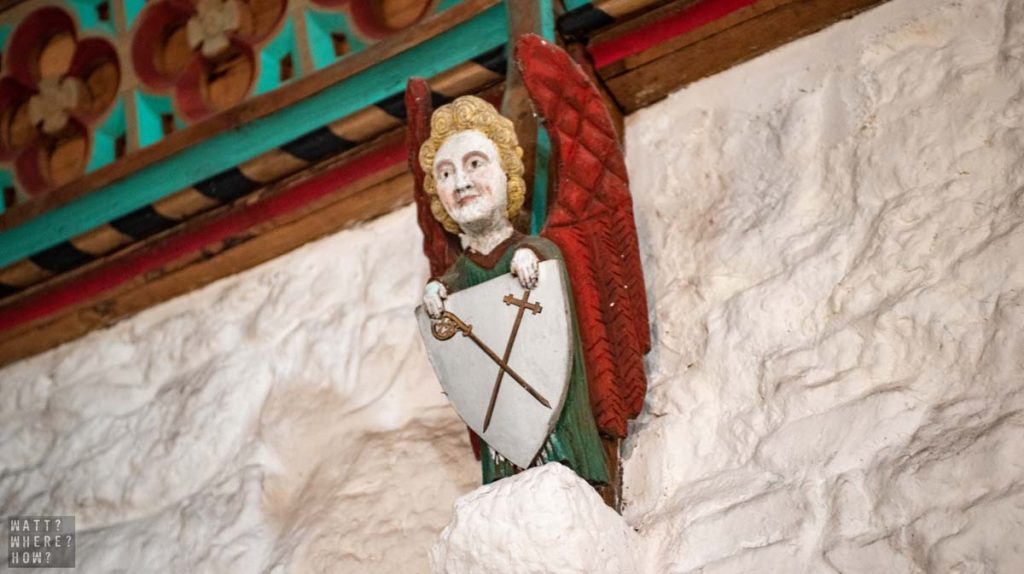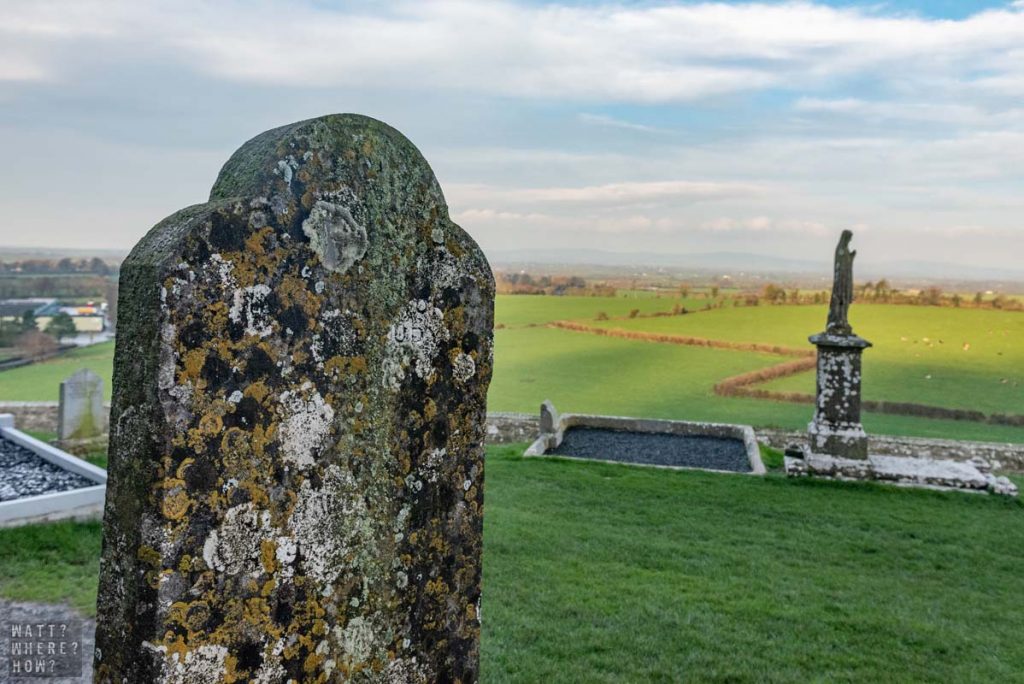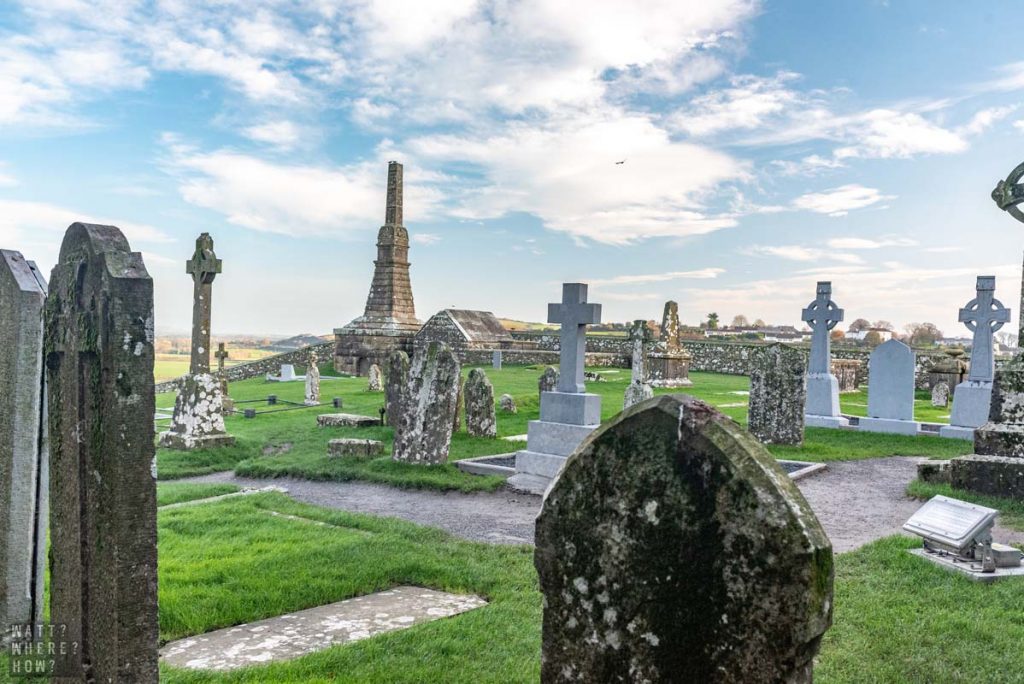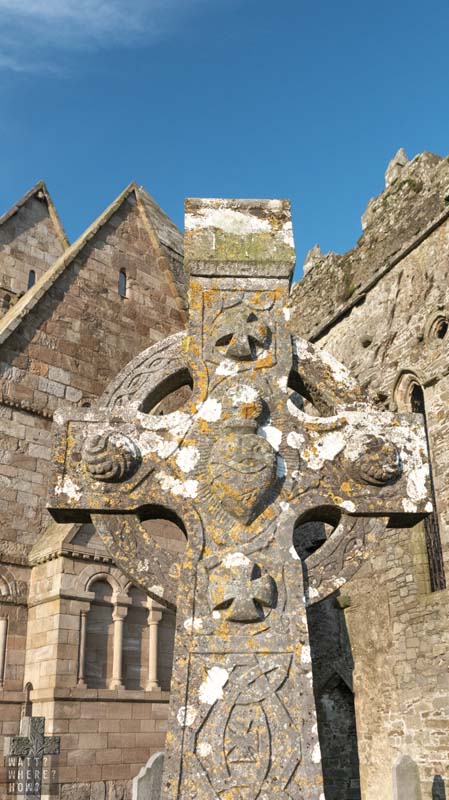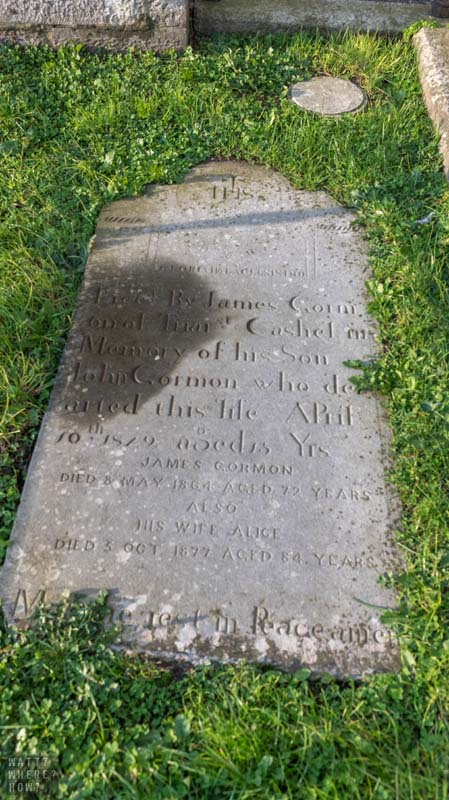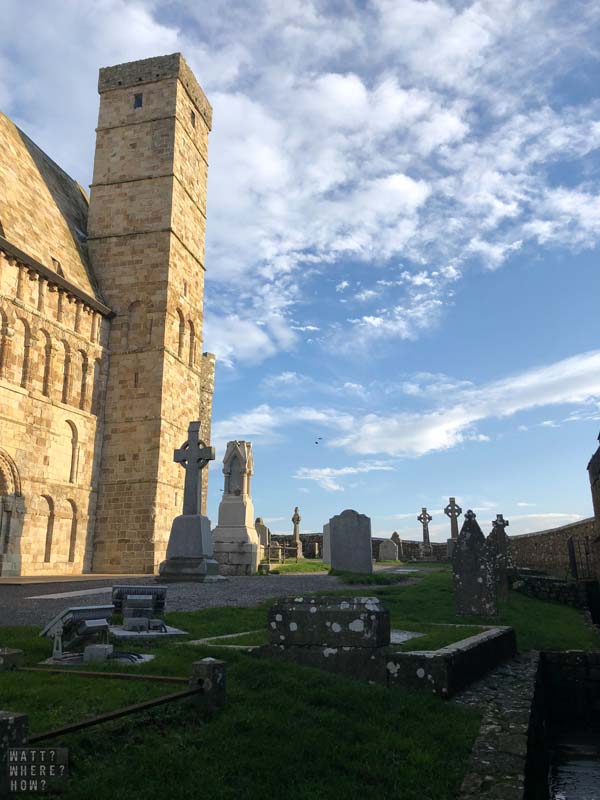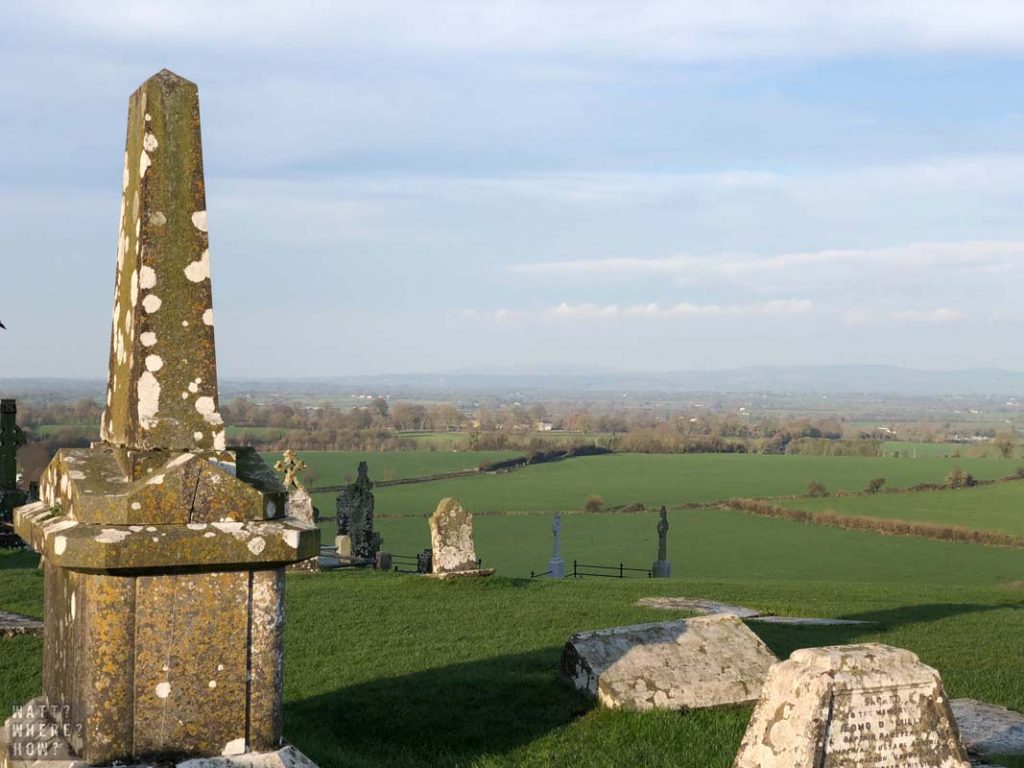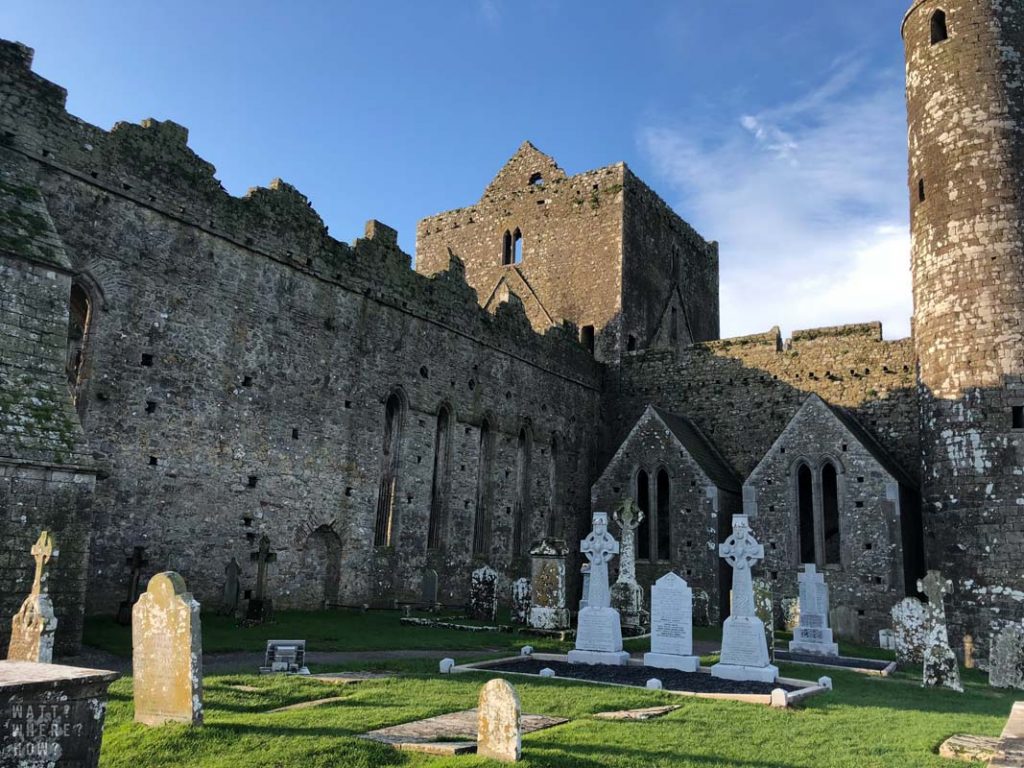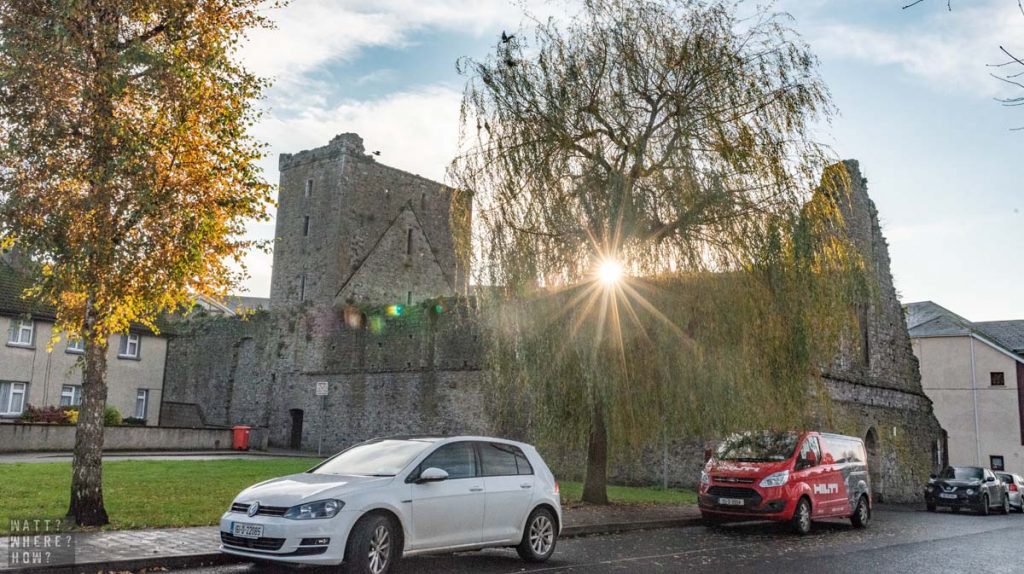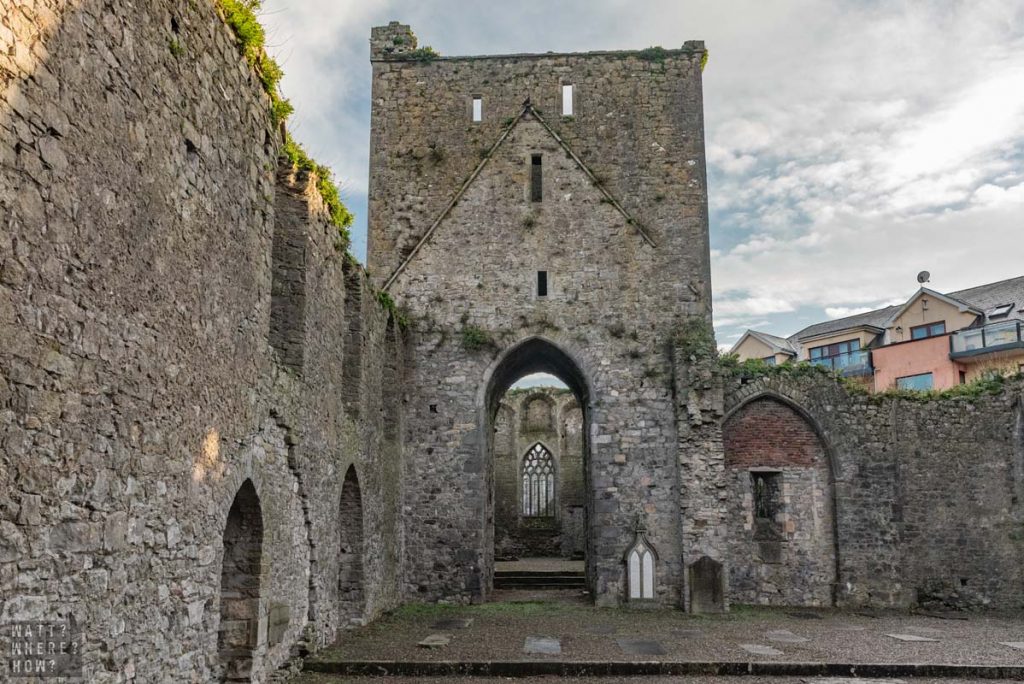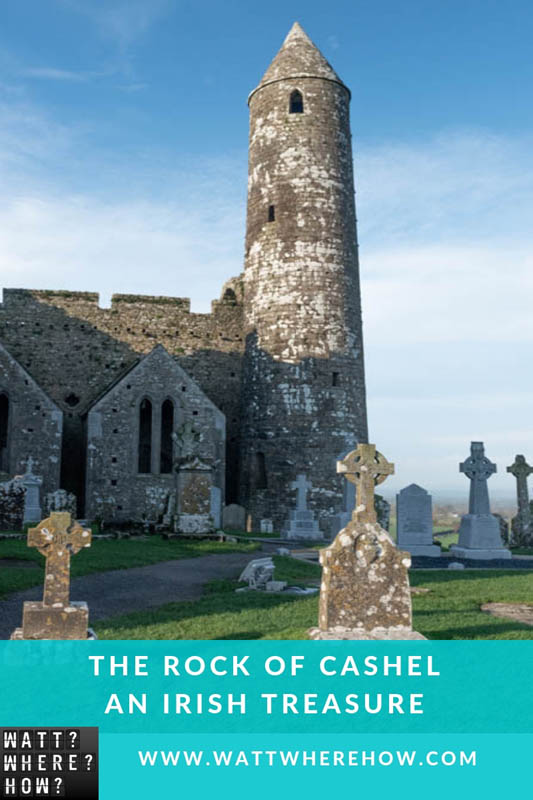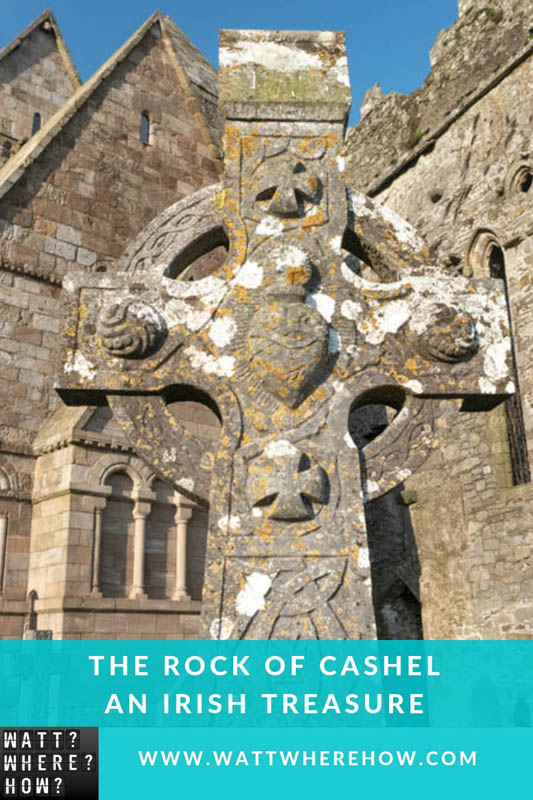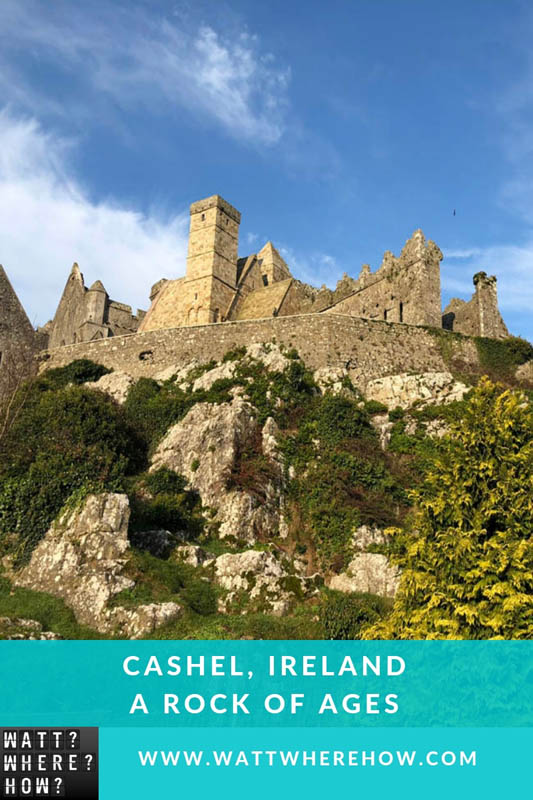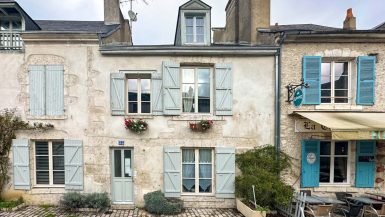Rising above the emerald green fields of County Tipperary, the Rock of Cashel stands stoically on a limestone outcrop like a real-life Hogwarts.
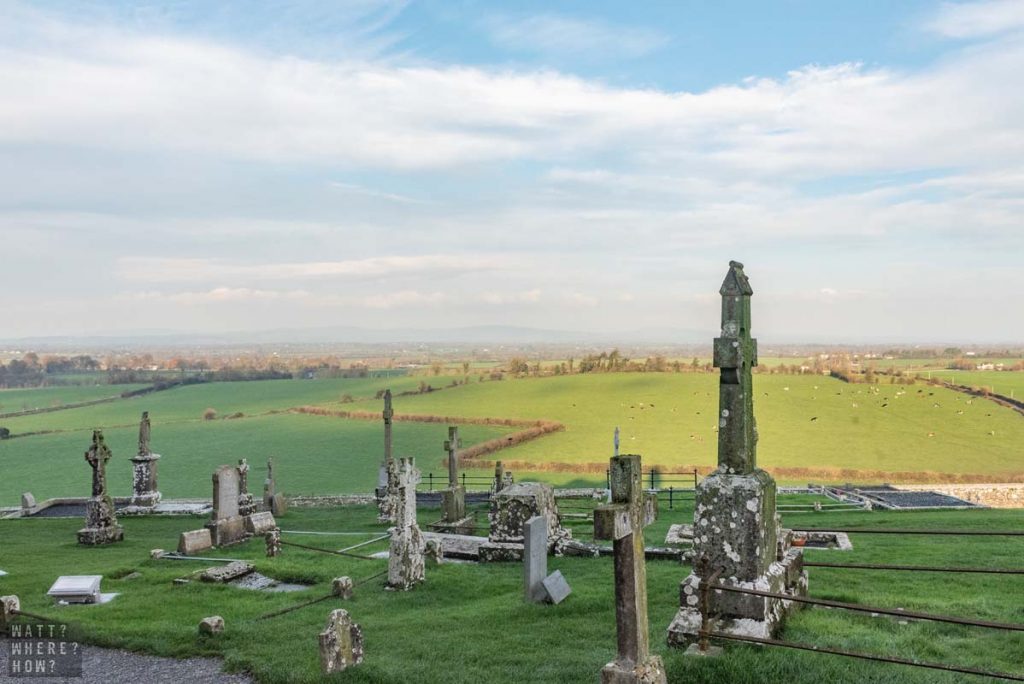
One of Ireland’s top heritage attractions, the Rock of Cashel dominates the rolling plains around it. Its easily defensible position overlooking miles of patchwork fields and dry stone walls would have made Cashel perfect for a castle, the rocky base providing all the natural resources to build a Bailey and curtain walls.
In fact, it was for its early incarnation, a seat of power for the kings of Munster. In the fifth century, Ireland’s patron saint, Patrick converted the Munster king on this spot and in 1101 the kings donated the site to the church. The oldest remaining structure from this era is the 28 meter round tower which is closed to tourists and apparently partially filled in to secure it for future generations.
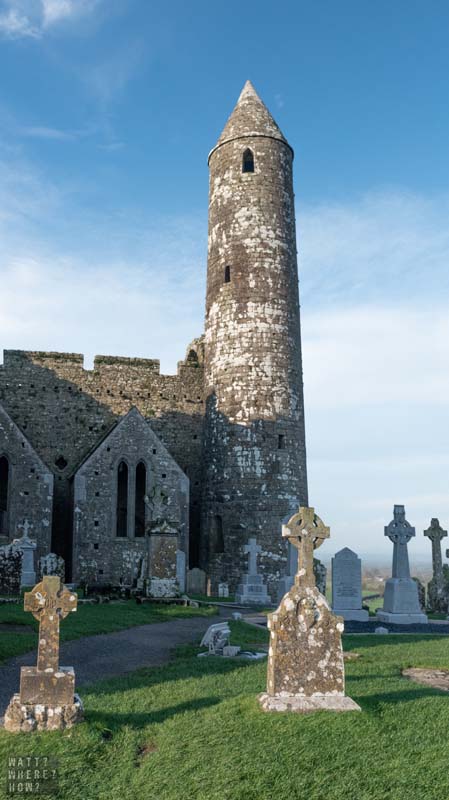
Entering the site through the restored Hall of Vicars dating back to the 1500s, carved beams and ornate tapestries set the scene and offer a haven from the freezing winds that sweep the plateau. Some of the archaeological finds are preserved in these rooms and a small theater screens a rolling presentation about the preservation efforts to protect the frescoes in famed Cormac’s chapel from dry rot.
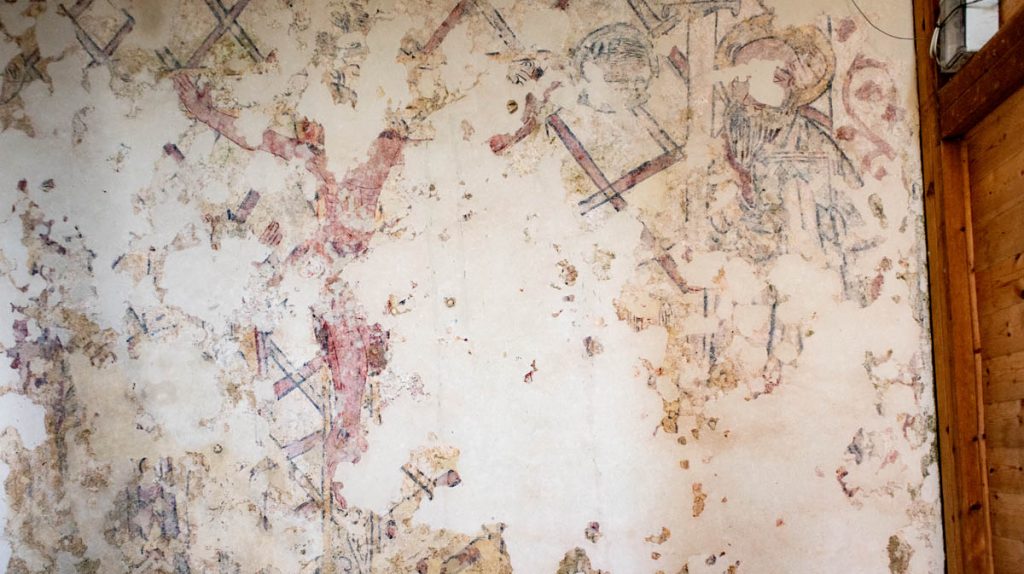
Of all the archaeological treasures on the Rock of Cashel, it’s Cormac’s chapel that is the richest connection with 12th century Ireland. Dedicated to King Cormac Mac Carthaigh it dates back to 1134 and offers a well-preserved fresco, which is protected from the elements and viewable for an additional cost.
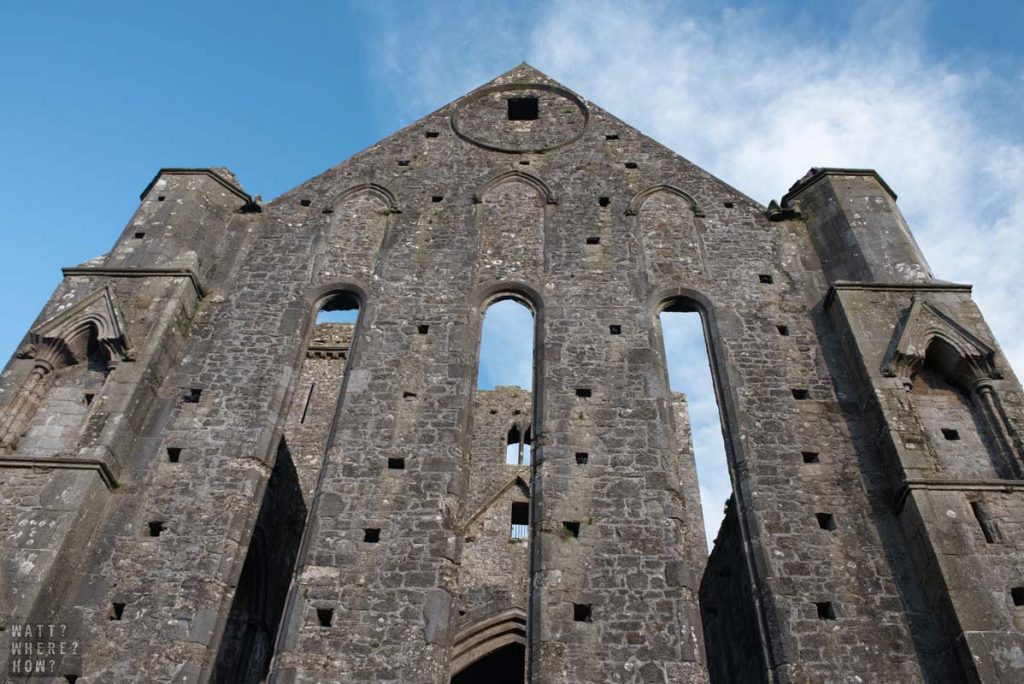
The Cathedral
Built onto the chapel in 1169 is St Patrick’s Cathedral. For all the blessings and prayers shared within, it has a dark past. In 1495, the Earl of Kildare burned the church down in an attempt to murder the bishop inside. Instead of being executed, King Henry VII appointed him Lord Deputy of Ireland.
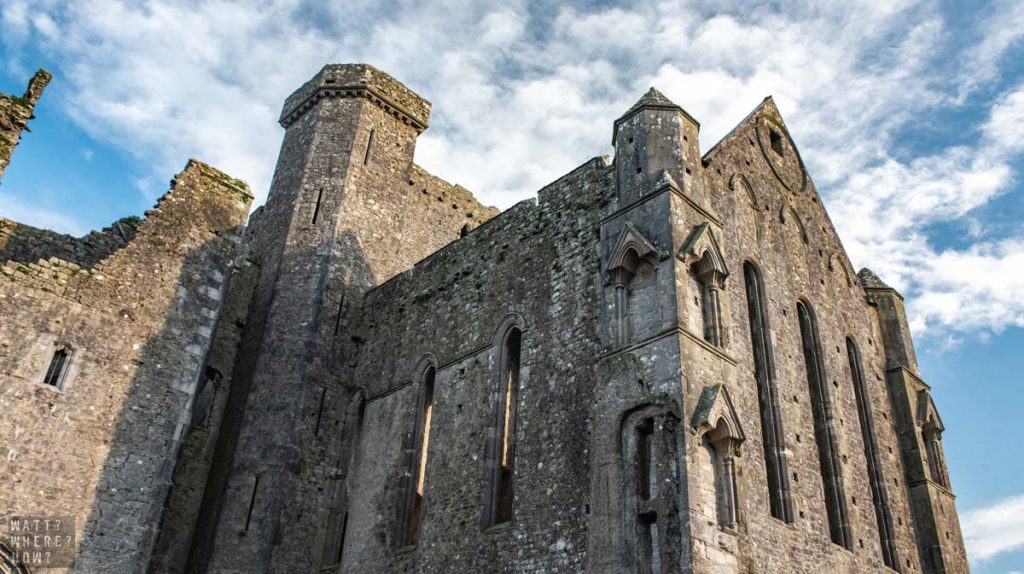
The Earl of Kildare burned the cathedral in 1495. The earl told King Henry VII that he burned it because he thought the bishop was inside. Because of that response, the king appointed him Lord Deputy for Ireland. It was pillaged by puritans in 1647, killing 3,000 with many burned alive, and after being rebuilt, it was abandoned in 1748, with the roof removed leaving it a skeleton of its former glory.
The Graveyard
Braving the cold, the cathedral is surrounded by an ancient graveyard with excellent examples of Celtic crosses. In the distance you can make out the ruins of another Abbey, Hore Abbey, which was consecrated as a Benedictine Abbey before being taken over as a Cistercian monastery. It was dissolved in 1540 and the lands around it transferred to Elizabeth I in 1561.
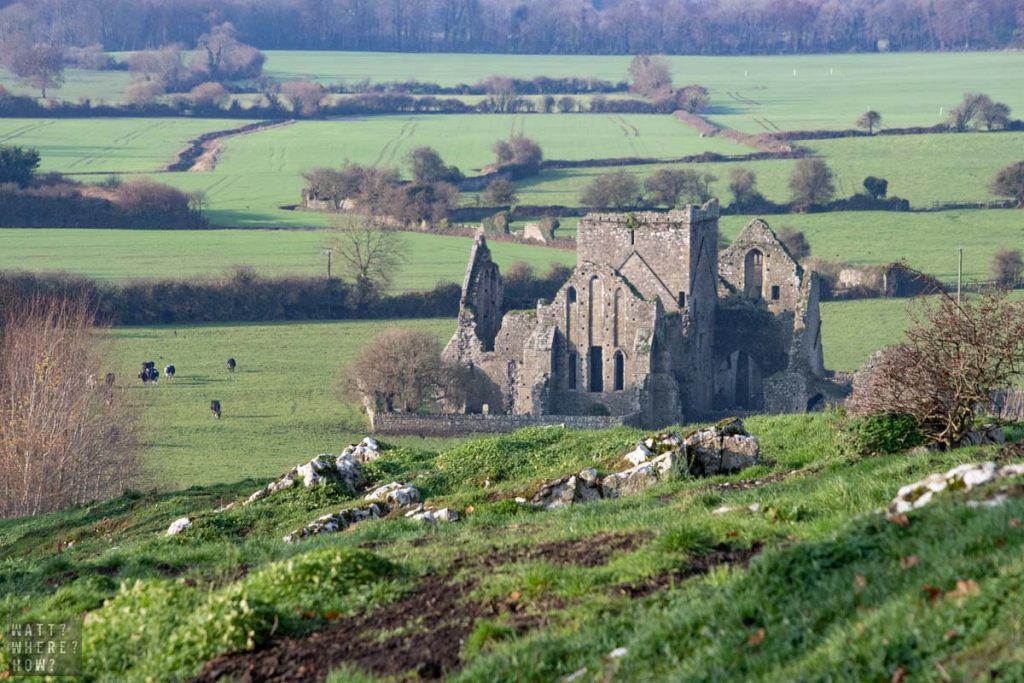
St. Dominic’s Abbey in the heart of the town of Cashel was founded in 1243. Served by Dominican monks from Cork, it burnt to the ground in 1480 and was rebuilt. Like all Catholic abbeys, it fell victim to the dissolution in the 16th century, but in this case, priests remained on site until the 1850s. While in the area, also check out the folk village across the street.
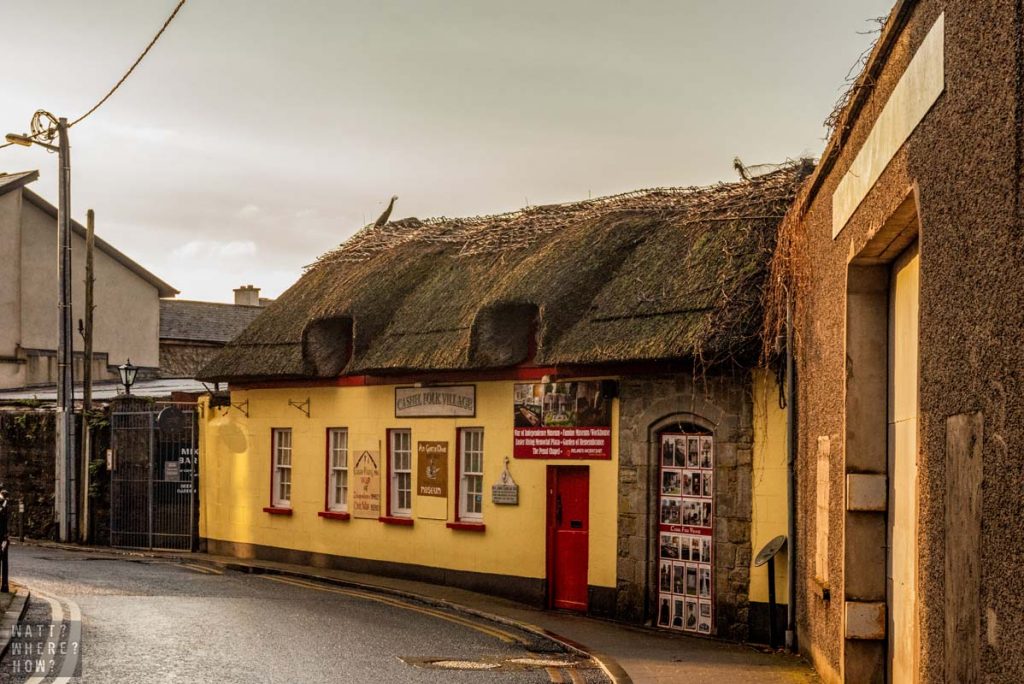
For more great Irish road trip and holiday ideas to add to your itinerary, browse our Ireland vacation inspiration.
Love Rock of Cashel? Pin and share it
WHAT?
Cashel is a Village in the heart of County Limerick, watched over by the dominant ruins on the Rock of Cashel.
WHERE?
Moor, Cashel, Co. Tipperary, Ireland
HOW?
Open all Year:
Mid Sept. – Mid Oct. Daily 09.00 – 17.30 Last admission at 16.45
Mid Oct. – Mid March Daily 09.00 – 16.30 Last admission at 15.45
Mid March – Early June Daily 09.00 – 17.30 Last admission at 16.45
Early June – Mid Sept. Daily 09.00 – 19.00 Last admission at 18.15
Closed 24th to 26th December inclusive
Average Length of Visit: 1 – 1.5 hours
Admission Fees
Adult : €8.00
Group / Senior : €6.00
Child / Student : €4.00
Family : €20.00



